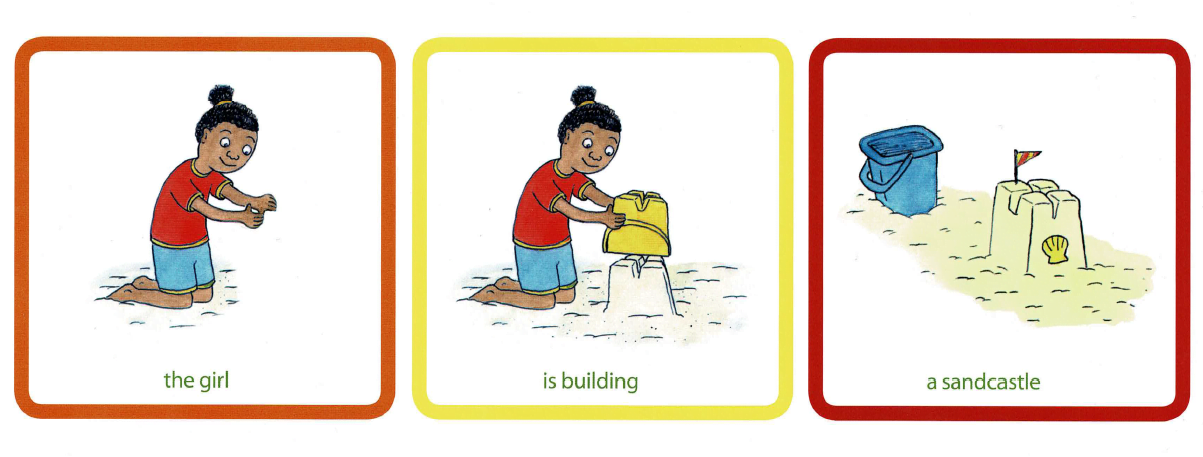Colorful Semantics is a structured language intervention program that aims to enhance a child's language development, particularly their expressive language skills. It was developed as a therapeutic approach to improve a child's ability to construct grammatically correct and contextually appropriate sentences. The program is often used by speech-language therapists, educators, and parents to support children with language difficulties, including those with developmental disorders like autism spectrum disorder (ASD) and other language disorders.
Key features and components of Colorful Semantics include:
- Color-Coding System: Colorful Semantics uses a color-coding system to represent different components of a sentence. These components are associated with specific colors, making it easier for children to understand and construct sentences. The key components are typically color-coded as follows:
- Who (represented by WHO questions): Typically colored as "yellow."
- What doing (represented by WHAT questions): Typically colored as "purple."
- What (represented by WHAT questions): Typically colored as "green."
- Where (represented by WHERE questions): Typically colored as "blue."
- Semantic Links: The program emphasizes the understanding of semantic relationships within sentences. By using these colors, children can visually recognize and link sentence elements, such as the subject, verb, object, and location.
- Structured Approach: Colorful Semantics follows a structured approach, progressing through various stages or levels of complexity. It begins with simple sentence structures and gradually moves to more complex ones. This allows children to build their sentence construction skills incrementally.
- Question Formation: The program incorporates question words (e.g., who, what, where) to encourage children to form questions and sentences in response to those questions. This helps them develop a deeper understanding of sentence structure and the role of each element.
- Hands-On Activities: The use of visual cues and manipulatives is common in Colorful Semantics. These can include colored cards, pictures, or objects that children manipulate to construct sentences. These hands-on activities make learning more engaging and interactive.
- Thematic Approach: Colorful Semantics often focuses on specific themes or topics to provide context for language development. This thematic approach can help children apply their language skills in meaningful contexts.
- Social Interaction: The program encourages social interaction by having children share and discuss the sentences they create with peers or adults. This helps improve their communication and conversational skills.
- Individualized Intervention: Colorful Semantics can be tailored to the specific needs and abilities of each child. Speech-language therapists and educators can adjust the program to meet the child's language development level.
- Progress Monitoring: Like other language intervention programs, Colorful Semantics includes mechanisms for progress monitoring. Educators or therapists can assess a child's language development by tracking their ability to construct increasingly complex and contextually relevant sentences.
Colorful Semantics is designed to be a versatile and effective tool for improving expressive language skills in children. By providing a visual and structured approach to sentence construction, it helps children build a stronger foundation for effective communication and expressive language.

